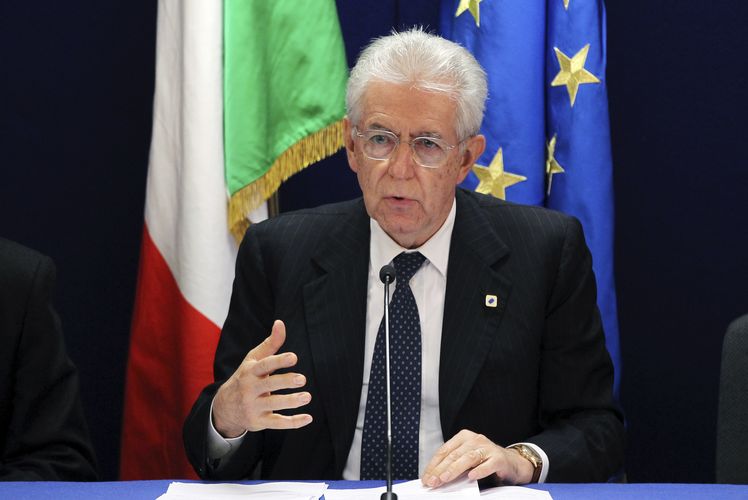Although Italy’s name repeatedly comes up in discussions about struggling European sovereigns, it has so far kept its head above water and managed to keep investors happy. Yet there is still no resolution in sight for a sovereign that is surely too big to fail.
To view the digital version of this report, please click here.
The ever-changing creditworthiness of Southern Europe has become a global obsession, with concern reaching far beyond the financial community itself. Greece led the march towards financial oblivion in 2011, with Portugal and Ireland playing supporting roles. In recent months, however, Italy and Spain became more pressing concerns, the scale of carnage likely to accompany a default by one of them upping the ante in the European sovereign debt crisis.
This cloud of uncertainty hung over the Italian Republic throughout the 12-month period, but there were significant developments that had given grounds for much optimism. The defenestration of Silvio Berlusconi and the elevation of Mario Monti to prime minister put Italy in a safe pair of hands and certainly calmed market jitters.
However, no government was immune to the effects of the crisis in Europe. A six-month gap between issues in September 2011 and March 2012 came while the broader sovereign market was largely shut to credits facing such uncertainty.
The period had started in difficult circumstances, with S&P placing Italy’s A+ rating on negative watch in May. The move had implications for every deal that followed, reinforcing the link between the troubled PIG states and Italy, a country with less acute problems but with such a vast bond market, the idea of bailing it out seemed incomprehensible.
The market’s resolve was first tested in June 2011, the sovereign mandating Credit Agricole, ING, JP Morgan, MPS Capital Services and UBS for a new syndicated 15-year BTPei. A new issue premium of no more than 2bp, as well as the €3bn size, were seen as a good result in the circumstances, with pricing set at plus 27bp.
The timing of the deal was vital, the sovereign having identified a window of relative stability in which to execute the trade, said Maria Cannata, director-general of the Italian public debt office. This enabled the sovereign to price the deal close to what she judged to be fair value, while many other Southern European sovereigns had to pay inflated sums to push their deals through.
In September conditions permitted Italy to sell €3.9bn for a September 2016 issue, and €2.6bn of August 2018s, February 2020s and September 2020 BTPs. In doing so Italy comfortably met its funding targets, although demand was down slightly on its previous transactions in those tenors.
Sentiment was certainly being propped up by the ECB’s Securities Market Programme, which saw the central bank buy €13.96bn of securities in the period leading up to the deal.
Doing the unthinkable
So far did sentiment in the European sovereign market sink in late 2011 that further issuance by Italy was unthinkable. However, 2012 started brightly, with various issuers coming to market and finding the mood much changed in the new year. Italy was back in March, turning to the retail sector for a four-year inflation-linked offering. The sovereign had to be a little creative to ensure appetite, linking the notes to Italian inflation figures, instead of those for the eurozone as a whole, and this certainly helped stimulate demand.
The issue raised €7.291bn, with initial rumours of a €1.5bn deal swept aside inside the first morning of marketing with orders for €1bn coming within hours. Some additional institutional demand also inflated the figure.
Meanwhile, Italy’s sovereign borrowing activity was also boosted by Cassa Depositi e Prestiti, the 70% state-owned bank that inherits the sovereign’s rating. CDP had some success in the market, with two issues in the year, in June 2011 and January 2012, the former being its first deal in the public market since a three-year transaction in 2009, coming shortly after its rating had been put on negative outlook in line with its sovereign parent.
“We used a combination of French government-guaranteed issues as well as covered bond levels and were able to price the deal at around a 35bp premium to BTP asset-swap levels. This was a significant achievement as the level was not dissimilar to government-backed levels for the issuer, which is not wholly state-owned,” said Emmanuel Smiecench, syndicate official at SG CIB, which worked on the deal.
They say it never rains but it pours, and after a three-year absence it was back again in six months with a buyback of 14.5% of its €3bn 3% January 31 2013 covered bond, part of its plan to shut down its covered bond programme. It bought back the bonds at par, ensuring CDP did not have to fund the assets until they reached maturity.
At the close of the period, there remain encouraging signs: Monti remains popular, despite forcing through difficult reforms. A recent draft document from the European Commission cited the need to press on with a raft of measures. “The full implementation of the bold fiscal consolidation strategy is a pressing need,” it stated.
The Commission singled out the need to bolster efficient tax collection; the need for a better alignment of wage and productivity developments; excessive tax on labour; low labour market participation and employment rates, particularly among the young, old and women; unsatisfactory education standards; significant infrastructure gaps; burdensome regulation; and a weak civil justice system.
At least the markets trust Monti’s commitment to the task more than they did the former government’s. Yet at the sovereign level, the outlook for Italy remains challenging, if not downright scary, with new concerns over Greece again threatening a domino effect that would quickly drag Italy squarely into the centre of the crisis.

